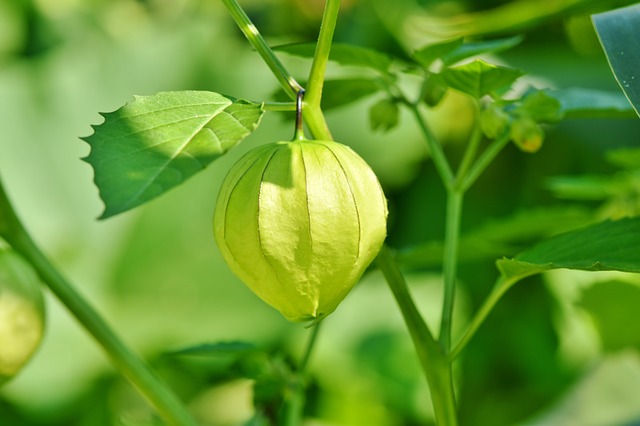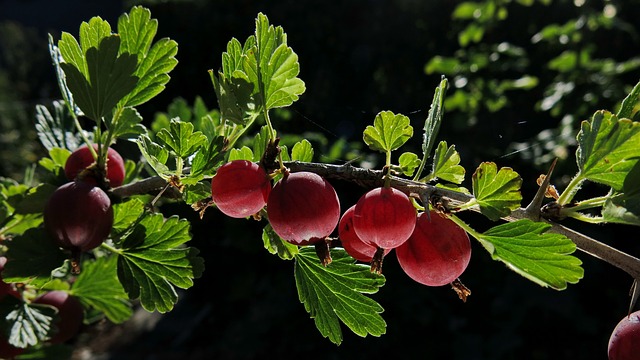How To Grow Gooseberry From Seed: A Simple Guide For Beginners

Get your hands on some seeds. Take a look at the packet. After that, soak the seeds for a few hours in warm water. The germination rate will be increased as a result of this. Allow them to dry until they reach room temperature.
Wrap them in a towel and store them in the refrigerator for 120 days. Keep the towel moist but not wet at all times. This is referred to as cold stratification, and it is required for gooseberry seeds to germinate.
Purchase one of those seed starter kits and fill it with a high-quality potting mix. It is beneficial to select the same mix that you intend to use in the garden later on. This will lessen the impact of the shock on the plant.
Sow about 0.5″ deep in each compartment, 2-3 seeds per compartment. Don’t be shy with the water. Keep them moist until they sprout.
Then, when they have a few leaves, you can transplant them outside into your garden. A plant with four or five sets of true leaves should be considered to be established.
Gooseberry is a plant that is extremely simple to propagate. You can either start from seed or buy a pre-grown shrub. Alternatively, if you don’t want to deal with the hassle of germination, you can purchase a baby bush from the nursery.
Since you have to deal with germination when starting from seed, it takes the longest to get started.
You’re starting from the beginning, but it’s also the most rewarding propagation method out of all the options available to you. Climbing plants can be started in a pot, directly in the ground, or even below a trellis.
It’s important to note that if you’re growing it outside in your garden, you should choose a location where it will be permanent. Because of its unwieldy size, it is difficult to relocate once it has become established.
In other words, if you want to use it as a privacy hedge, a barrier, or some sort of decoration, you should plant it in the appropriate location.
Furthermore, growing plants from seed will not result in genetically identical plants to the original plant.
Because seeds frequently produce hybrids or random varieties, you never know what you will get. They also require a significant amount of time and effort to develop.
Table of Contents
Gooseberry Plant Care Instructions
The following are some fundamental guidelines for caring for gooseberries.
The requirements of your plant will vary depending on the variety you are growing. On the other hand, these suggestions can be used as a high-level overview.
Hardiness Zone
Gooseberry grows well in USDA hardiness zones 3-8. It is a perennial plant. It can be grown in higher or lower zones, as long as you provide adequate shade in hot weather and insulation in cold weather.
Growing it in the recommended zone, on the other hand, is the simplest and requires the least amount of maintenance.
Soil
The soil Gooseberries do best when they are planted in rich, fertile soil that drains well. It prefers substrates with high nitrogen and potassium concentrations.
If your soil’s nutrient profile is deficient, you can improve it by adding some organic amendments. If you are unsure of your soil’s metrics, a soil test kit can help you figure it out. If you want to grow organic berries, use organic fertilizer. Avoid soils that are too shallow or too dry.
Soil pH
Soil pH Aim for a pH of 6.0-6.5, which is slightly acidic but not acidic enough to cause problems. Like the majority of berries, Gooseberries prefer a pH of 6.5 or lower.
If you need to lower the pH of your soil, you can add amendments. However, it is simpler to simply purchase a few bags of soil that are suitable for the job.
Depth
When planting seeds, sow them a quarter-inch deep to ensure germination. Use soil to cover the branch a few inches deep while leaving the rest of the branch exposed to compost or mulch if you use cuttings or layering techniques. Simply put, that’s all there is to it.
Spacing
Place each plant approximately 3 feet apart to ensure no competition between the plants. Gooseberry can grow quite large, so you should make sure to leave enough space between each shrub.
Sunlight
Gooseberries prefer cool environments, so planting them in partial sunlight is ideal. If you live in a cooler hardiness zone (such as the northern United States), they can thrive in full sun, making them a good choice for those early morning sun rays.
For those who live in a hotter climate, don’t be afraid to provide them with 6 or 7 hours of sunlight per day. The more sunlight you receive, the more fruit you will produce. On the other hand, the leaves will be burned if the weather is extremely hot. Therefore, it mustn’t be exposed to the afternoon sun to maintain its integrity. If at all possible, keep temperatures below 80 degrees Fahrenheit.
To help block out those harmful light rays, you can use plant shades to your advantage. The most effective method is, to begin with, the most appropriate location in your garden.
Choose a cool location with the partial sun – a little afternoon sun with plenty of shade is ideal – and plenty of shade. Plant on the eastern side of your garden to benefit from the morning sun.

Watering
Maintain a moist but not wet environment around the base of the plant. Aim for 1-2 inches of water per week, but be prepared for rain or uncertainty and adjust your expectations accordingly. Never overwater a plant.
Wet roots are a big no-no for gooseberry. Due to the fact that the roots are so close to the soil surface, it can also cause fungal problems.
High-quality mulch can assist in retaining water while also reducing the need to water the garden.
It should not be allowed to dry out between watering sessions.
Humidity
Because of the cool, shady environment in which gooseberries thrive, it is important to maintain a low humidity level. Excessive water consumption is not a good thing.
If you keep your plant in a humid environment, you may give it fungus or mold. Reduce the amount of humidity in the air and increase the rate of evaporation by pruning.
Temperature
Gooseberry can be grown in a wide range of temperatures, from -30F to 85F. If you’re in the right frame of mind, you won’t have to worry about it.
Mulching
Mulching has numerous advantages, and there is no reason not to do so. You help to conserve water, keep bugs away, keep weeds at bay, and help to keep temperature swings at bay.
Mulch your gooseberry with a few inches of straw, bark chips, or compost to look its best. If you live in a hot climate, reduce your water consumption. If you live in a colder climate, you should use more.
A thick layer of mulch can help keep the wild swings of the winter weather at bay and prevent your roots from being damaged by the elements. Because the roots are so shallow, the layer of mulch is extremely beneficial.
